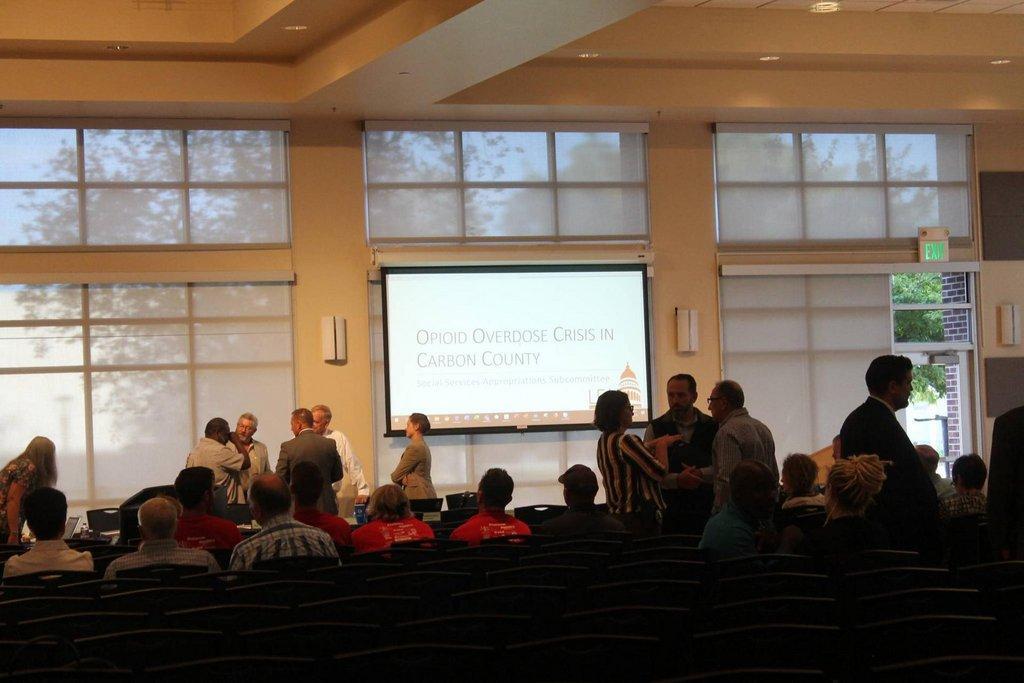Utah State University Eastern recently played host to the opioid town hall meeting to follow up from last year’s meeting.
The evening meeting included a thorough run through of the past year and specific programs that gathered information to present to the Social Services Appropriations Subcommittee, the host of the event. The meeting was filled with information from the past year and questions from the committee. The committee started the meeting by welcoming everyone and thanking them for attending. There were also many handouts provided with information from previous meetings and to gain a better background of the topic of the meeting: the opioid crisis in Carbon County.
The background provided in a small packet stated, “As the three-hour town hall meeting on the opioid overdose crisis held by the Social Services Appropriations Subcommittee in Price, Utah on Monday, September 17, 2018, many individuals provided suggested action steps to address the problem. The subcommittee heard from 21 members of the public, nine experts on the panel, as well as suggestions from staff research.”
There was also a written update provided. Additional information provided the number for state funding for the Carbon County Opioid Plan, which is an ongoing $260,000 and $125,000 one-time starting July 2018. The purpose stated that there’s needed staff for drug addiction, mental health and suicide prevention as well as medication assisted treatment.
One of the handouts provided described what community-based programs in Carbon County would be presenting at the meeting. Those programs topics were: detention/home detention, juvenile receiving center, youth services, shelter, in-home observation and assessment, case management, and school-based outreach. Each of these had a brief description on the paper, illustrating how the program works and what is provided for clients or patients. There was also information provided a number of how many youth were served in 2018 and 2019, how they link into the program and other involved entities.
Attendees were given an overview of the nine recommendations. Along with the title of what they were, it gave a brief overview and websites for additional information. The nine recommendations listed were more access to substance use disorder treatment services, deflection of those with substance use disorder prior to arrest, required support structure post-drug court graduation, provide more community-based services to juveniles, have the prescription drug database compare similar medical providers to similar providers, create a risk assessment for opioid prescribing, assist prescribers in setting their medical software prescribing defaults according to centers for disease control guidelines, pathways to employment for those criminal records, and lower cost of local technical college options at USU Eastern. The nine points of information gave the original explanation and the action that will be taken.


